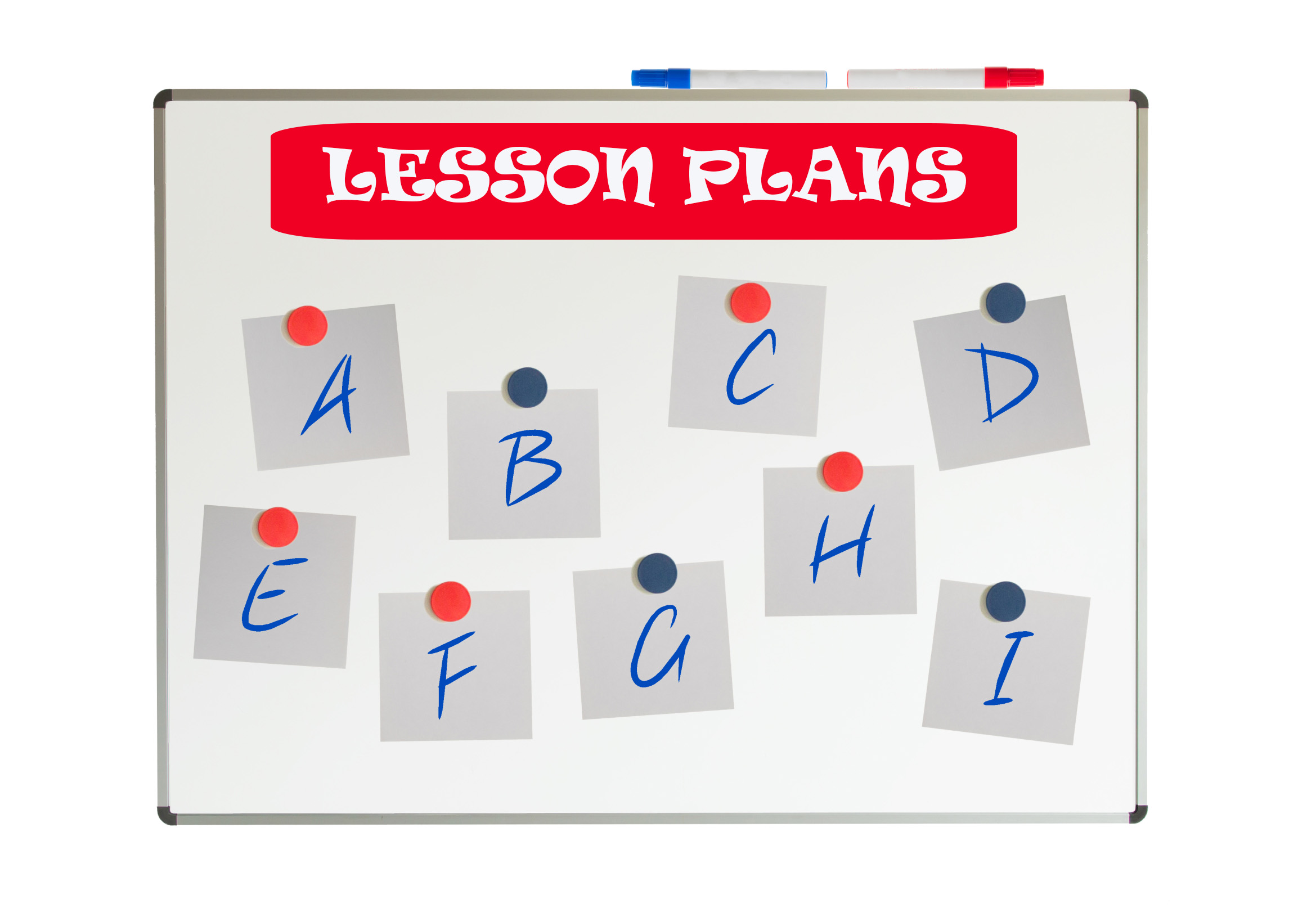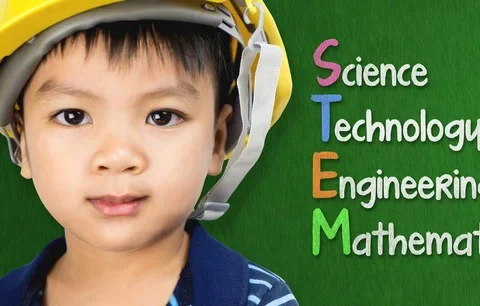 STEAM–Science, Technology, Engineering, Arts, and Math–is education’s new STEM. By adding the creativity and problem-solving skills that are part and parcel to Anything Art, students have permission to use colors, images, and outside-the-lines thinking to address Big Ideas and Essential Questions.
STEAM–Science, Technology, Engineering, Arts, and Math–is education’s new STEM. By adding the creativity and problem-solving skills that are part and parcel to Anything Art, students have permission to use colors, images, and outside-the-lines thinking to address Big Ideas and Essential Questions.
I’ve written before on ways to use STEM every day in classwork. Here are twelve of my favorite STEAM projects where artistic thinking becomes the engine for unpacking solutions. I think you’ll like them.
Classroom Architect
1st-2nd grade; free
Use Classroom Architect as the canvas to redesign the classroom layout by dragging-and-dropping chairs, shelves, tables, computers, and more within a virtual classroom. A text tool allows students to label parts, add their name, and append notes that explain what they created. When done, students can take a screenshot and save/share/print.
With this project, students learn spatial layout, rudimentary engineering, and the importance of a proper room arrangement in their learning and class experiences.
CSI Adventures
Middle School; free
Published by the Rice University School of Mathematics, these five CSI-based adventures, from novice to advanced, ask students to use critical thinking skills, including the creativity nurtured by art, to solve tricky evidence-based cases. To solve the mystery, students may have to identify scents, hold virtual clinical trials, look into a mysterious outbreak in a remote location, and more. When students are finished, they have a better idea of the part science plays in unraveling mysteries and whether that’s a career they would enjoy.
The site includes guides for both educators and parents, extra links, and demo videos to guide students toward their goal.
Dig a hole through the Earth
Any age; free
Dig a hole through the Earth poses the intriguing question asked by every preschool child: What would happen if you dug a hole from one side of the earth to the other. It explains why that is impossible but then allows students to do just that from the location of their choice. A fun activity is for students to start the digging at their home and see where they end up.
While the site includes lots of physics details, it’s also great for youngers by focusing on the visual elements of the activity.
Digital music
Any age; free/fee
Create music virtually using a variety of web-based tools that reproduce the composing experience. Options include:
Each program provides different composing tools, from basic to fully-featured. No surprise that the simpler ones (like Create Music and Finale’s Print Music) are more intuitive while the robust ones (like Sibelius and Finale Pro) have a steeper learning curve and provide a more satisfying project. Some of the webtools are compatible with all popular digital devices; others with only a few.
This is a great addition to a formative or summative assessment, providing an option for students who communicate better with music than words.
Digital art
Any age; free/fee
Many (many) students have difficulty expressing themselves with text. They know the material, but struggle to communicate that to teachers. For them, one picture is truly worth a thousand words. Think of how the world’s great art affects so many; it makes sense to offer a artistic platform to share evidence of learning. There are a wide variety of drawing websites that are intuitive to use but robust enough for this purpose:
- Draw.to (free)
- Graffiti Creator (free)
- KidPix (software download or app)
- Photoshop (software download or online subscription)
- Sketchpad (free)
- SumoPaint (free)
- TuxPaint (free software download)
Most of these sites not only allow students to draw a picture but to append text, video, images, bubbles, and more.
Like the digital music sites above, with these sites, students can communicate their knowledge as suits their learning style.
Google Earth
Any age; free
Google Earth, accessed online or as downloaded software, lets users explore the planet virtually, visit thousands of 3D buildings, view tens of thousands of pictures uploaded by people around the planet, access themed overlays published by the community (such as Civil War battlefields), go back in time to see the planet as it was a hundred years ago, and travel underwater or to a celestial body. Google Earth uses Earth Science to expand storytelling (with Lit Trips) and to support math (with tools like the ruler). Students can link locations into tours and share with classmates on the Google Earth platform or save as a movie and share anywhere.
If you don’t have Google Earth, Bing Maps and Google Maps are reasonable options (though without many of the specialized tools). An option educators have fallen in love with is Scribble Maps with a host of Google Earth tools and a few of its own thrown in.
Lunapic
3rd grade and up; free
Lunapic is an easy, intuitive, and automatic way to add filters, borders, effects, text, drawings, animations, and more to existing images. Personalizing drawings is a great way for students to use freely-available public domain images and then edit them to communicate exactly what students want them to say.
Since students use existing art rather than draw their own (though Lunapic does offer a blank canvas if students want to start from scratch), it presents a perfect opportunity to discuss copyrights and plagiarism as it applies to artistic work.
Minecraft
2nd grade and up; fee
Minecraft is an open-world game of survival that promotes creativity, problem-solving, and collaboration while students build 3D projects on specific topics. These can be complicated or simple and often include creating a scale model of a California Mission, building a molecule, and visiting an ancient world. Minecraft uses a wide variety of STEAM skills but especially technology, engineering, and math. For many, they are the multitool for lesson planning, gamifying any learning opportunity in a way students love.
To adapt Minecraft to schools, many educators rely on Minecraftedu for tips and tricks.
Pivot Animator
6th grade and up; free
Pivot Animator is a simple downloaded program (though some find it less than intuitive) that enables students to build animated stick figures and export them as a GIF or an AVI file without any knowledge of Flash animation. Once the animated figure is drawn, students can add backgrounds and other figures to communicate a wide variety of ideas.
Pivot Animator only works on Windows. If you have another platform, try Draw a Stickman (well-suited for elementary school ages)
Robotics
Any grade (with adaptations); fee
Robotics integrates all STEAM fields in a way no other subject can. It has become a favorite activity when teaching:
- problem-solving skills
- critical thinking
- engineering
- math
- programming/coding
Students get to play with robots, program them to do whatever (well, not quite ‘whatever’) they want, and call it classwork. Teaching with robots is the epitome of a gamified lesson plan as students not only have the tactile experience of building a robot, but the coding experience as they program its actions and troubleshoot mistakes.
According to STEM Center USA, robotics:
- makes learning fun, engaging, and inspiring
- provides highly practical hands-on experience
- gives a head-start in preparing for high school and college
- develops critical thinking skills and problem-solving strategies
- enables learners to develop and express creativity
- develops the ability to work collaboratively in teams
- helps your student develop an intuitive understanding of physical concepts in science and math
- helps to excel in math and science and choose a career in science and technology
- enables learners to appreciate and realize technology
- builds confidence and self-esteem
- prepares your student for the fast-paced competitive world
Lego Mindstorm is a favorite choice for a robotics program, but there are many other options. Expect to provide teacher training and invest some money to gain the benefits of this activity.
SketchUp
6th grade and up; free/fee
SketchUp is a very simplified but effective CAD and 3D modeling program, enabling users to quickly and clearly sketch out any idea from idea to concept using rudimentary knowledge of architecture and engineering. In fact, Google Earth’s 3D Warehouse is a public collection of thousands of free SketchUp-drawn models ranging from a toothbrush to the Colosseum that are used on Google Earth and other virtual locations. Some consider the program intuitive, but I didn’t. Lucky for me, there is lots of help both on the site and through video collections like YouTube.
The basic version is free, but there’s a Pro edition that requires a fee. It’s a great tool for engineering and math that relies on a student’s innate artistic imagery to communicate ideas (meaning: there’s little text involved in the project).
Weather station
Any age; free/fee
Set up a school-based weather station to see in real time how weather affects life and analyze worldwide weather data. Using a site like Earth Networks WeatherSTEM program, you’ll get lots of information on how to do this as well as a variety of webinars on different weather topics. WeatherSTEM works by integrating a collection of data into one easy-to-read weather data visualizations. That information can assist in a huge range of applications from planning sporting and family events to organizing transit to finalizing business dealings.
***
With STEAM, art regains its rightful position as the engine of critical thinking. These projects give you twelve ways to try it out in your blended classroom.
–published first on TeachHUB
More on STEAM projects:
Jacqui Murray has been teaching K-18 technology for 30 years. She is the editor/author of over a hundred tech ed resources including a K-8 technology curriculum, K-8 keyboard curriculum, K-8 Digital Citizenship curriculum. She is an adjunct professor in tech ed, Master Teacher, webmaster for four blogs, an Amazon Vine Voice reviewer, CAEP reviewer, CSTA presentation reviewer, freelance journalist on tech ed topics, contributor to NEA Today and TeachHUB, and author of the tech thrillers, To Hunt a Sub and Twenty-four Days. You can find her resources at Structured Learning.
–updated 12-23-18





































=)